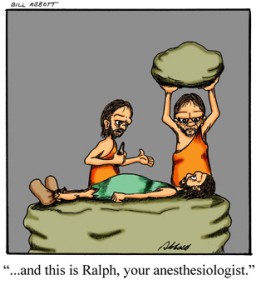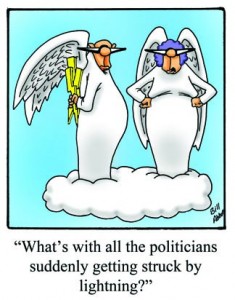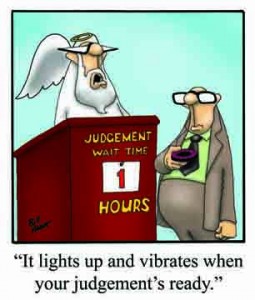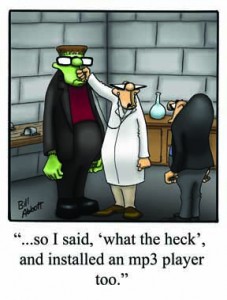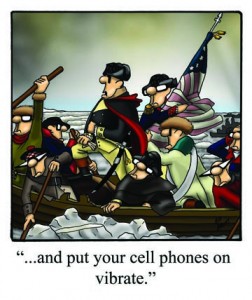Bill Abbott is the extremely talented cartoonist and  illustrator of “Bill Abbott Cartoons”. His work appears in magazines, on greeting cards, calendars, to name just a few places, and represented by Alexander Pollard. Adam Meiklejohn of MGL Licensing (Bill’s licensing agent in the UK) just signed a deal with Hallmark UK making it official – they’ll be using 82 of Bill’s cartoons for cards, gift bags, and gift wrap, among other products. Bill puts a lot of work into his comics and releases only the best. When I talk with other cartoonist, I’m always listening to what they have to say, and Bill is a wealth of information. Bill has some exciting plans ahead and I’m thrilled to feature him at “Don’t Pick the Flowers”.
illustrator of “Bill Abbott Cartoons”. His work appears in magazines, on greeting cards, calendars, to name just a few places, and represented by Alexander Pollard. Adam Meiklejohn of MGL Licensing (Bill’s licensing agent in the UK) just signed a deal with Hallmark UK making it official – they’ll be using 82 of Bill’s cartoons for cards, gift bags, and gift wrap, among other products. Bill puts a lot of work into his comics and releases only the best. When I talk with other cartoonist, I’m always listening to what they have to say, and Bill is a wealth of information. Bill has some exciting plans ahead and I’m thrilled to feature him at “Don’t Pick the Flowers”.
David: When did you become interested in comics and decide you wanted to make comics your career?
Bill: My first experience with cartooning that I can recall was when I was four years old. I had “Peanuts” curtains and bedspread, and attempted drawing them over and over again. I was, and remain, a huge fan of Charles Schulz and the commitment he brought to the craft of cartooning. From that point forward I’d become addicted to comics and had the little paperback books of “Dennis the Menace”, “Peanuts”, and works by other cartoonists as constant companions. I continued to draw through my teen years then, for some reason I really can’t put my finger on, I got away from it. In the time since, I’ve been a stockbroker, I’ve served in the military, a special agent in law enforcement, among other things, and occasionally turned to drawing when time permitted. I returned from overseas in mid-2008 after which I realized that life has an undefined expiration date and I’d better start living it doing the things I’m passionate about. Cartooning and humorous illustration are at the top of that list (unless an unknown rich uncle leaves me a gazillion dollars, then hyper-wealthy international jet-setter moves to the top of the list). I hope that wasn’t too long winded.
David: What are the things that spark your creativity to create comics?
Bill: That’s a great question and kind of a tough one to answer. I’m a fan of so many other cartoonists, I’d say that looking at the work of really talented people like Mark Anderson and his “Andertoons”, Ted Goff’s business cartoons, Randy Glasbergen, the greats of Mad magazine, New Yorker cartoonists and so many others would have to be at the top of my list of inspiration. Additionally, I read quite a lot and love the humor of H.L. Mencken – it’s a dry wit that’s timeless, and the well delivered turn of a phrase can become the seed of a cartoon. Sometimes I’ll hear a word or a name that sounds funny, and I’ll jot it down to use it in a cartoon. Other times it’s looking at great artwork. My “Washington Crossing theDelaware” cartoon started that way. I also try to take art classes whenever I can through our adult education programs here in westernNew York, and try things I wouldn’t normally. I love to learn and I’m committed to always improving my work, and there’s a good deal of inspiration in that. And the coffees free, so there’s that too.
David: How do you create comics? What kind of routine do you have, what works best for you?
Bill: To me, the writing is the most critical part of a cartoon, so I start with gag-writing. You know those little yellow sticky notes? I use those to do a thumbnail sketch of gags I come up with, and then stick them in a business-sized envelope to look at later. I’ll usually come up with five to ten at a time. I’ll then go back to the envelope after it starts to fill up and go through them to find ones that are good enough to draw without rethinking. I use Strathmore Bristol board for all of my cartoons and start by drawing a seven inch by seven inch square box. I have a plastic drafting triangle-thingy with the dimensions marked on either side, then use a Sharpie to ink it in. Once that’s done, I pencil in the gag and try to add as many of the final details as possible. For inking, I now use an antique Pelikan fountain pen – I’d found it described in New Yorker cartoonist Mischa Richter’s book, “The Cartoonist’s Muse” – a must have for anyone who is considering cartooning as a career – and fell in love with how the pen affects line work. Prior to that, I’d used Speedball dip pens, Micron pens, and combinations of the two. Part of the tactile pleasure of drawing is experimenting with different mediums. I sounded pretty high falutin’ there, didn’t I. Anyway, I then scan in my work with an Epson scanner, and use Photoshop to add the color. I’ve still got a long road to walk before I can call myself proficient in Photoshop, but I’m forever searching for tutorials and podcasts on techniques. Chaos is the routine in my house, with my wonderful wife, two growing sons and a crazy schedule – something I’ll bet many cartoonists find themselves having to work around.
David: You also create greeting cards, can you expand on that?
Bill: Actually, I don’t really create specifically for greeting cards, I just write and draw what I think is funny with the hope that others might think it’s funny too. I submitted my work to Renaissance Greetings back in 2003 and after about six months received a phone call from their art director saying they’d like to license three of my cartoons. After I regained consciousness, I formatted the work the way they’d asked and sent it along on a CD. I still receive royalties from that sale. I then spent a great deal of time overseas on numerous deployments, so my cartooning took a bit of a rest. When I returned from my last deployment in 2008, I contacted art licensing agent Suzanne Cruise of Cruise Creative to see if she’d be interested in representing me, and she was. Since then my work has appeared on over seventy different greeting cards with a number of companies, on calendars with Mead – even as figurines. I now have licensing agents in theUK(MGL Licensing) andAustralia(Grahame Allan), and it’s a lot of fun seeing my work on different products. Adam Meiklejohn of MGL is working on finalizing the details on a big deal, and we hope to make an announcement very soon in which my work will be seen on a lot more stuff by a lot more people.
David: You have some exciting plans ahead, what can we expect to see from you and your work in the future?
Bill: First, I’d like to say how grateful I am to be doing what I love to do, and how truly wonderful people have been in responding to my work. I was recently contacted by Bill Kellogg of Ink Bottle Syndicate to run “Spectickles” weekly in the Funnies Extra (hitting a city near you in the coming months) published by Richard Cross who also happens to be a talented cartoonist. Richard and I had a few conversations, the results of which were collaboration on a comic we call “Karma Cafe”, which is also being syndicated weekly in the Funnies Extra. It’s been a lot of fun and I draw in a totally different style, so I’m pretty excited about that. Licensing has certainly taken a whack with the poor economy, but good things continue to happen, and that’s exciting too. Additionally, I’ve started doing some illustration work, and I’m being represented by agent Alexander Pollard, so there may be a children’s book in the future – we’ll see. Cartooning is my passion, and I’ve been assisting others new to the craft which is very gratifying. Giving back for the good fortune you’ve received, to me, is a critical part of completing your role as a professional cartoonist.
David: Your passion is infectious Bill. What a pleasure to hear of your life and work. And thank you for sharing your good fortune.
Find out more of Bill Abbott at:

